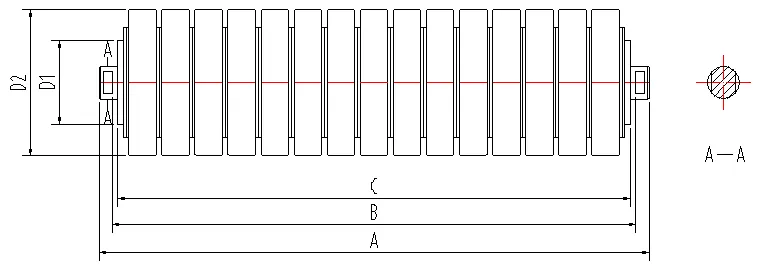 Afrikaans
Afrikaans  Albanian
Albanian  Amharic
Amharic  Arabic
Arabic  Armenian
Armenian  Azerbaijani
Azerbaijani  Basque
Basque  Belarusian
Belarusian  Bengali
Bengali  Bosnian
Bosnian  Bulgarian
Bulgarian  Catalan
Catalan  Cebuano
Cebuano  Corsican
Corsican  Croatian
Croatian  Czech
Czech  Danish
Danish  Dutch
Dutch  English
English  Esperanto
Esperanto  Estonian
Estonian  Finnish
Finnish  French
French  Frisian
Frisian  Galician
Galician  Georgian
Georgian  German
German  Greek
Greek  Gujarati
Gujarati  Haitian Creole
Haitian Creole  hausa
hausa  hawaiian
hawaiian  Hebrew
Hebrew  Hindi
Hindi  Miao
Miao  Hungarian
Hungarian  Icelandic
Icelandic  igbo
igbo  Indonesian
Indonesian  irish
irish  Italian
Italian  Japanese
Japanese  Javanese
Javanese  Kannada
Kannada  kazakh
kazakh  Khmer
Khmer  Rwandese
Rwandese  Korean
Korean  Kurdish
Kurdish  Kyrgyz
Kyrgyz  Lao
Lao  Latin
Latin  Latvian
Latvian  Lithuanian
Lithuanian  Luxembourgish
Luxembourgish  Macedonian
Macedonian  Malgashi
Malgashi  Malay
Malay  Malayalam
Malayalam  Maltese
Maltese  Maori
Maori  Marathi
Marathi  Mongolian
Mongolian  Myanmar
Myanmar  Nepali
Nepali  Norwegian
Norwegian  Norwegian
Norwegian  Occitan
Occitan  Pashto
Pashto  Persian
Persian  Polish
Polish  Portuguese
Portuguese  Punjabi
Punjabi  Romanian
Romanian  Russian
Russian  Samoan
Samoan  Scottish Gaelic
Scottish Gaelic  Serbian
Serbian  Sesotho
Sesotho  Shona
Shona  Sindhi
Sindhi  Sinhala
Sinhala  Slovak
Slovak  Slovenian
Slovenian  Somali
Somali  Spanish
Spanish  Sundanese
Sundanese  Swahili
Swahili  Swedish
Swedish  Tagalog
Tagalog  Tajik
Tajik  Tamil
Tamil  Tatar
Tatar  Telugu
Telugu  Thai
Thai  Turkish
Turkish  Turkmen
Turkmen  Ukrainian
Ukrainian  Urdu
Urdu  Uighur
Uighur  Uzbek
Uzbek  Vietnamese
Vietnamese  Welsh
Welsh  Bantu
Bantu  Yiddish
Yiddish  Yoruba
Yoruba  Zulu
Zulu v belt idler
Understanding V-Belt Idlers Importance and Applications
V-belt idlers play a crucial role in the mechanical industry, serving as pivotal components in various systems that rely on belt-driven mechanisms. Their main function is to enhance the performance and longevity of V-belt drive systems, which are widely used in different applications, from industrial machinery to automotive systems.
What is a V-Belt Idler?
A V-belt idler is a pulley that serves to guide, tension, or redirect the path of a V-belt in a drive system. Unlike drive pulleys that actively transmit power, idlers mainly function to maintain proper tension on the V-belt, reduce slipping, and ensure that the belt operates at optimum efficiency. By providing additional wrap around the drive pulleys, idlers help in the distribution of load, which minimizes wear and tear on both the belt and the related components.
The Mechanics of V-Belt Drives
V-belts are designed with a trapezoidal cross-section, which allows them to fit snugly into the grooves of pulleys. This design maximizes the contact area, thereby increasing grip and minimizing slippage. The performance of a V-belt drive system heavily relies on the correct tensioning and alignment of the belts, making the role of the idler pivotal.
Idlers can be adjustable or fixed in position, depending on the design requirements. Adjustable idlers allow for modifications in tension, making it easier to maintain optimal performance as the belt stretches or wears over time. On the other hand, fixed idlers are designed for stable environments where minimal adjustments are expected.
Benefits of Using V-Belt Idlers
v belt idler

1. Increased Efficiency By maintaining proper tension in the V-belt system, idlers improve energy transfer efficiency. A well-tensioned V-belt reduces the likelihood of slippage, leading to smoother operation and improved overall performance.
2. Prolonged Equipment Life Idlers help distribute the load across the belt more evenly, reducing localized stress and wear. This not only extends the lifespan of the V-belts but also protects other mechanical components from premature failure due to excessive wear.
3. Reduced Maintenance Costs With the correct use of idlers, organizations can minimize the frequency of belt replacements and repairs, thus lowering maintenance costs over time. Efficient idlers can significantly enhance the reliability of machinery, translating into fewer downtimes.
4. Flexibility in Design V-belt idlers can be incorporated into various machinery designs, offering versatility in systems requiring different belt routing paths and configurations. This adaptability makes them suitable for a wide range of applications, from conveyor systems to automotive engines.
Applications of V-Belt Idlers
V-belt idlers are utilized in numerous industries including manufacturing, agriculture, automotive, and more. In manufacturing, they can be found in machinery such as conveyors, compressors, and fans, where consistent power transmission is essential. In the automotive sector, V-belt idlers are integral to engine accessory drives, affecting components like alternators, water pumps, and air conditioning units.
Conclusion
In essence, V-belt idlers are indispensable components that facilitate effective motion transfer in V-belt systems. Their ability to maintain tension, guide belt paths, and enhance overall system efficiency underscores their importance across various applications. As industries continue to evolve, the design and efficiency of V-belt idlers will likely play a critical role in advancing the performance of mechanical systems, ensuring that operations are not only efficient but also economically viable. Understanding their function and benefits can lead to better design decisions and maintenance practices that optimize machinery performance in various fields.
-
Revolutionizing Conveyor Reliability with Advanced Rubber Lagging PulleysNewsJul.22,2025
-
Powering Precision and Durability with Expert Manufacturers of Conveyor ComponentsNewsJul.22,2025
-
Optimizing Conveyor Systems with Advanced Conveyor AccessoriesNewsJul.22,2025
-
Maximize Conveyor Efficiency with Quality Conveyor Idler PulleysNewsJul.22,2025
-
Future-Proof Your Conveyor System with High-Performance Polyurethane RollerNewsJul.22,2025
-
Driving Efficiency Forward with Quality Idlers and RollersNewsJul.22,2025





























